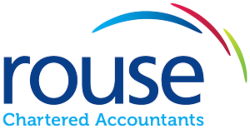Low salary, high dividends
A low salary, high dividend remuneration strategy has long been a popular tax planning method for owner managed businesses, but recent reductions in dividend allowance have limited the benefits of this. The Dividend Allowance is currently £2,000 (2021/22) above which the dividend ordinary rates apply.
Shareholders/directors in owner managed businesses normally choose one of three strategies (please note that all figures shown are for the 2021/22 tax year):
- Taking a salary at the minimum level to trigger a national insurance record. If you take a salary of between £6,240 (£520 per month) and £8,840 (£736 per month) you will pay no income tax and no employee/employer class 1 NICs, but you will get an NIC credit towards your state pension.
- Another option is to pay yourself a slightly higher salary up to £9,568 (£797 per month). You’d still pay no income tax and employee NICs. However, your company would need to pay a small amount of employer’s NICs. However, this additional salary and employer’s NICs would receive corporation tax relief in your company, therefore your company would be slightly better off, to the tune of about £50 per year. This option has the drawback that you will have to remember to pay HMRC the employer’s NICs on time during the year via the PAYE system. For a net tax saving of around £50, it might be more advisable to keep things simple and avoid the added admin.
- A third option is to take a salary at the personal allowance level (£12,570 in 2021/22) which will avoid paying income tax on earnings but a proportion of which will be liable to employee NICs (which following recent announcements are set to rise from April 2022 to support the NHS and social care).
Taking dividends
Whichever of the above options is chosen you can then take any further money from the company as dividends. Currently the dividend rates are still lower than income tax rates, so this remains a better option than income via a salary for most directors withdrawing profits above the Dividend Allowance. However, you should note that from April 2022 tax on dividend income will increase by 1.25% to support the NHS and social care.
There are some drawbacks to taking dividends. They can only be paid out of profit and will depend on share classes and holdings as to how these are paid between the shareholders. Employing this strategy could also impact your ability to secure a mortgage with some lenders who favour salary as a method for determining borrowing suitability. Also unlike salary, dividends are paid after tax so are not a tax deductible expense.
Employment allowance
If your company employs at least one other person in the year, it may also qualify for the employment allowance of £4,000 (in 2021/22) which covers the cost of employer’s Class 1 NIC up to this amount. You will need to check that you meet the qualifying criteria.
Tax-free expenses
You are able to claim expenses that you have incurred from your business which are not subject to tax. This is of course a more efficient method of extraction than recovering them via your dividend/profit share. It can also be used in combination with the above strategies. However, care should be taken to only claim allowable expenses and to keep records and receipts where possible.
Typical expenses can include:
- Mileage (but not commuting) for any business-related travel in own car
- Any ‘own pocket’ cash expenses incurred on behalf of the business
- Pension contributions
- Childcare vouchers – eligible in certain circumstances
Employer pensions
Another way to receive tax-efficient remuneration is through pension contributions from your company. This is different from contributing to your pension yourself, as it counts as an employer pension contribution. This has the added benefit that it will be an allowable business expense which can be used against your corporation tax bill. They are also not liable to employer NICs.
As an individual you cannot pay more into a pension in a year than your earned income for that year. Therefore, this is difficult with small salary plus dividends strategies. But employer pensions are not limited in this way, they are calculated based on your annual allowance for that year and can include unused pension annual allowances from the previous three years.
Pension contributions are the most tax-efficient way of extracting profits from a business. However, the obvious drawback is that you can’t access this until at least the age of 55. However, under the new pension freedoms, those over 55 are able to take 25% of their pension fund tax-free.
Entrepreneurs’ Relief
Entrepreneurs’ Relief is probably the most efficient way to extract profit from a trading business but it involves selling the business, so won’t be an option for everyone but is useful if you have retained a lot of cash in your business. It can work as part of a longer term plan where your business pays corporation tax (19% in 2021/22) on profits but can retain the income for later extraction.
Usually Capital Gains Tax would be due on the disposal of the business, however if you qualify for Entrepreneurs’ Relief you can apply a reduced rate of CGT of 10% to £1 million lifetime gains made. Furthermore, you can increase the allowance by £1 million, by spreading the shares between yourself and your spouse. If you both meet the 5% shareholding test for at least the two years before the sale, and are a director or company secretary for the company or employed by it, you should both qualify for entrepreneurs’ relief on any gains made when the company is sold.
In conclusion
Tax efficient extraction is essentially a moving goal post with reliefs and allowances liable to change, which can render a successful strategy one year, inefficient the next. There may also be further tax planning opportunities based on your own individual circumstances.
It is therefore important to involve your accountant or tax advisor in your planning on at least an annual basis.
We discuss tax efficient remuneration with clients as part of our pre-year end planning service and can also offer this as part of our self assessment service. Please contact us to find out more or to discuss your specific circumstances.

Award-winning chartered accountants offering tax, audit and advisory services.


